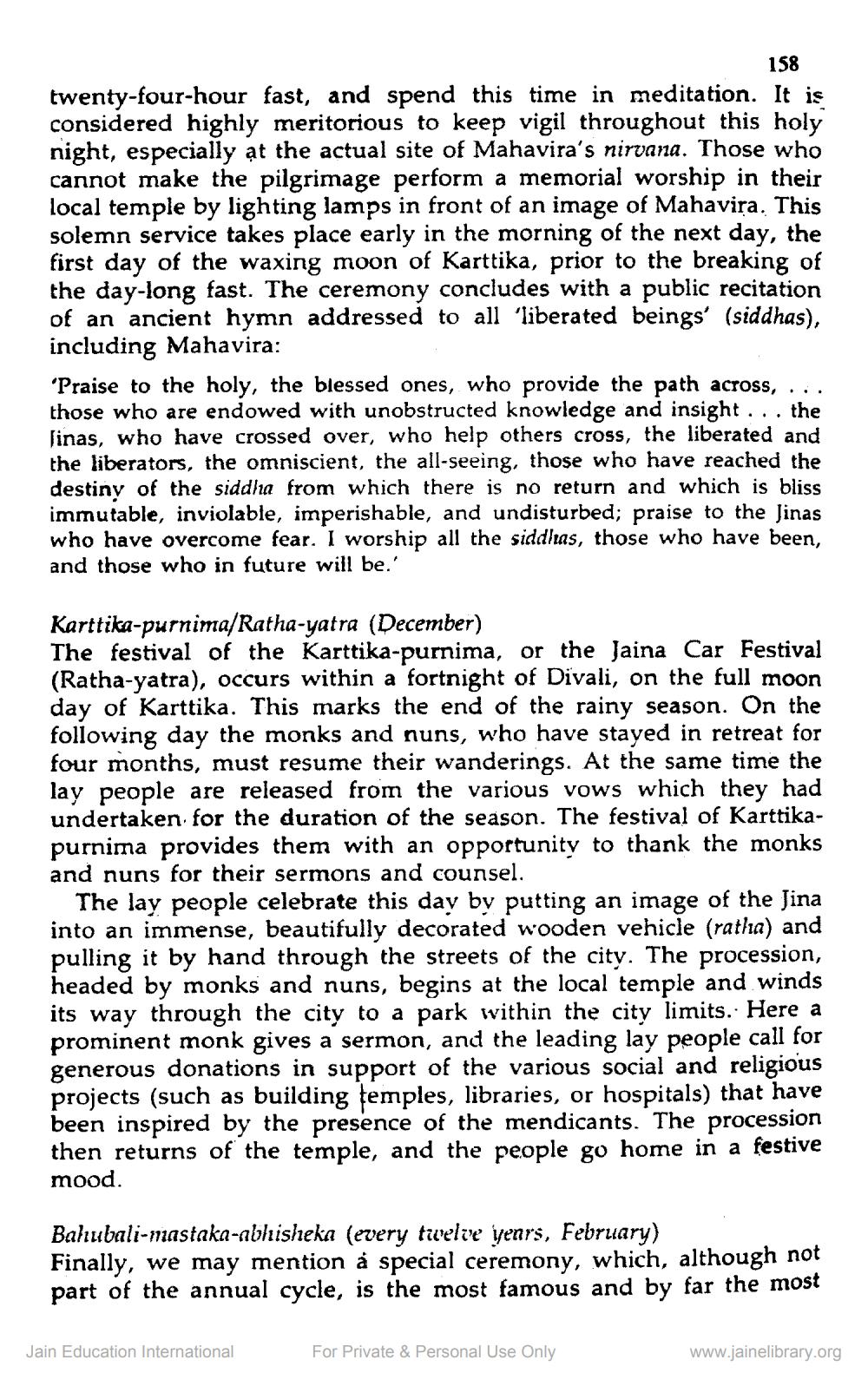________________
158 twenty-four-hour fast, and spend this time in meditation. It is considered highly meritorious to keep vigil throughout this holy night, especially at the actual site of Mahavira's nirvana. Those who cannot make the pilgrimage perform a memorial worship in their local temple by lighting lamps in front of an image of Mahavira. This solemn service takes place early in the morning of the next day, the first day of the waxing moon of Karttika, prior to the breaking of the day-long fast. The ceremony concludes with a public recitation of an ancient hymn addressed to all 'liberated beings' (siddhas), including Mahavira: 'Praise to the holy, the blessed ones, who provide the path across,.. those who are endowed with unobstructed knowledge and insight ... the linas. who have crossed over, who help others cross, the liberated and the liberators, the omniscient, the all-seeing, those who have reached the destiny of the siddha from which there is no return and which is bliss immutable, inviolable, imperishable, and undisturbed; praise to the Jinas who have overcome fear. I worship all the siddhas, those who have been, and those who in future will be.'
Karttika-purnima/Ratha-yatra (December) The festival of the Karttika-purnima, or the Jaina Car Festival (Ratha-yatra), occurs within a fortnight of Divali, on the full moon day of Karttika. This marks the end of the rainy season. On the following day the monks and nuns, who have stayed in retreat for four months, must resume their wanderings. At the same time the lay people are released from the various vows which they had undertaken for the duration of the season. The festival of Karttikapurnima provides them with an opportunity to thank the monks and nuns for their sermons and counsel.
The lay people celebrate this day by putting an image of the Jina into an immense, beautifully decorated wooden vehicle (ratlia) and pulling it by hand through the streets of the city. The procession, headed by monks and nuns, begins at the local temple and winds its way through the city to a park within the city limits. Here a prominent monk gives a sermon, and the leading lay people call for generous donations in support of the various social and religious projects (such as building temples, libraries, or hospitals) that have been inspired by the presence of the mendicants. The procession then returns of the temple, and the people go home in a festive mood.
Bahubali-mastaka-abhisheka (every twelve years, February) Finally, we may mention a special ceremony, which, although not part of the annual cycle, is the most famous and by far the most
Jain Education International
For Private & Personal Use Only
www.jainelibrary.org




